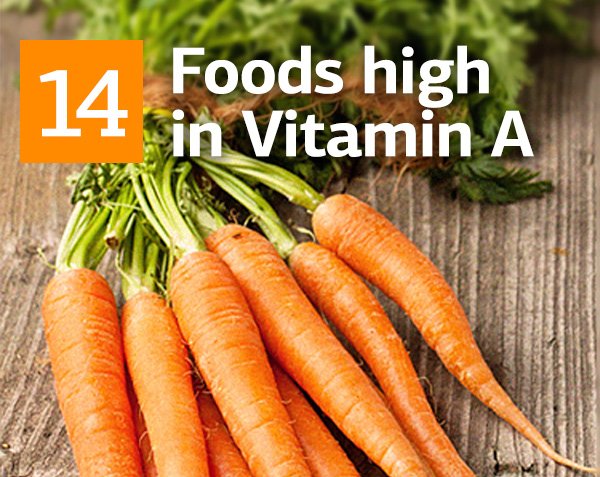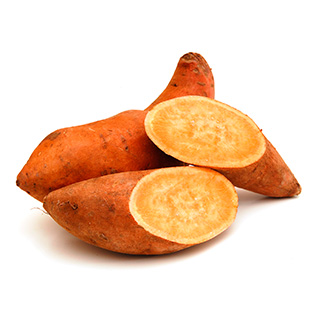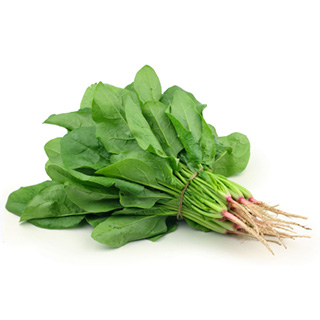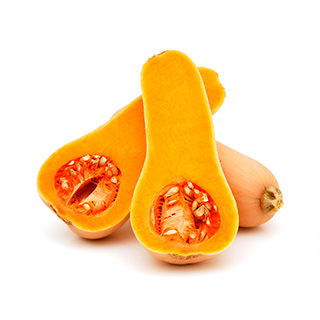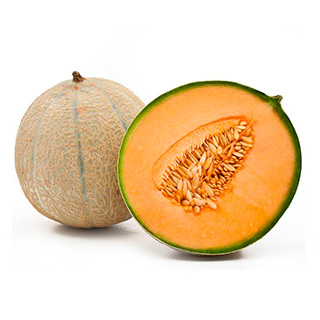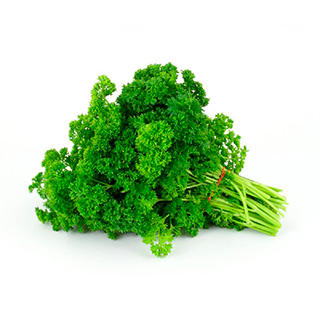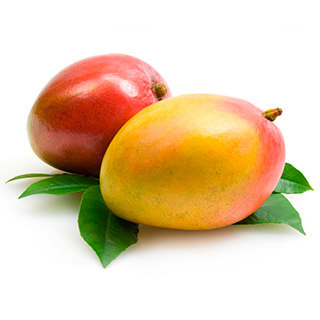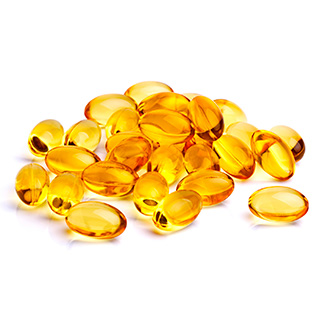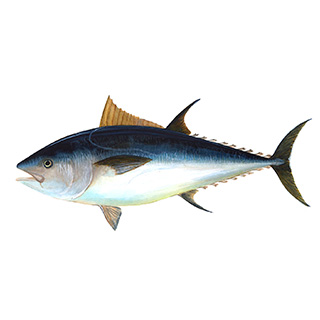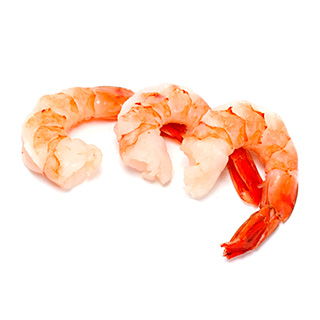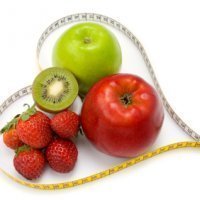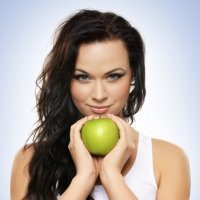Vitamin A and Top 14 Foods High in Vitamin A
Do you want to have always young, tender and gloving skin? Do you want to have perfect sight? Do you want your body to be healthy and able to fight most of the pathogenic diseases? I bet you say "Yes!" to all of the three questions. In this case vitamin A is a must in your daily ration.
Vitamin A was first found in carrots, that is why it is also well known as carotenoid. Actually, there is a whole group of nutrients called carotenoids. They all have vegetable origin and can convert into vitamin A in the process of digestion.
There is also a group of nutrients that have animal origin and can convert into vitamin A. This group is called retinoids. Both carotenoids and retinoids are equally important to our health. It would be wrong to say that a person could live without one of these two nutrient groups, or that they both have totally similar effect on our body. For example, retinoids are vital for our sight. They enable as to see in the dark. Lack of these nutrients can cause the disease called mooneye. Retinoids are also responsible for cellular regeneration, which is fundamental for our skin. Without vitamin A synthesized from retinoids, our skin would look gray and ugly, because all the dead cells would stay on its surface as the new ones could not be generated. Retinoids also support our immune and inflammatory systems. Carotenoids, because of their ability to convert into retinoids, have always been seen as a sort of substitution for retinoids. However, recently scientists have discovered their antioxidant and anti-inflammatory functions.
Interaction Of Vitamin A With Other Nutrients
Interaction of vitamin A with other nutrients is still an area for scientific debates, but it is a proven fact that our body can synthesize this vitamin only with the help of certain binding proteins. This means that if you want a carrot to give your body carotenoids, you should eat it with a chicken breast, for example. And do not forget to add some butter and beans. They will provide your body with dietary fat and zinc, needed for absorption of vitamin A.
Deficiency Of Vitamin A
Deficiency of retinoids and carotenoids can lead to problems with eyesight, dry eye syndrome, anemia, infectious diseases. People, who are not used to having fruits and vegetables in their daily ration, are the first in the risk group for these diseases.
Dietary Toxicity Of Vitamin A
Low amount of vitamin A in products of animal origin makes it impossible for any adult to reach the toxicity level. In other words, we simply cannot eat so much animal food that it could cause vitamin A toxicity. However, if you take too large doses of retinoid-containing supplements, it is possible even to overcome the toxicity level. So, if you are taking any food additives, make sure to check their nutritive value and stick to the prescription doses.
Carotenoids, on the other hand, are much easier to consume. Luckily for us, even if we eat too much of sweet potato or carrot, the only side effect we will experience is a little more yellowish skin.
I think that was enough for Biology part. Now, let us continue with the information you really need to pay attention to. This is the list of food products that contain carotenoids and retinoids. Include them into your diet and stay active, healthy, and beautiful for many years!
Top 14 Foods rich in Vitamin A
1. Sweet Potato
| Vitamin A in Sweet Potato, Unprepared | |
| 100 g | 1 sweetpotato, 5 inch long (130 g) |
| 709 mcg (118% DV) |
921.7 mcg (154% DV) |
Your #1 choice among all the veggies and fruits that contain vitamin A should be sweet potato. Only 100 g of these eatable roots can give you almost 120% of Carotenoids that you need per day. It is also full of manganese, which is good for your brain. Tasty sweet potato can be easily cooked in an oven. Just put it there for 40 or 50 minutes (depending on the size of the root) and take it out ready to be served. Backing does not decrease the number of vitamins and nutrients of the product. That is why this recipe is not only delicious, but also a very healthy one.
2. Carrot
 Types of Carrot High in Vitamin A (100g):
Types of Carrot High in Vitamin A (100g):
| Vitamin A in Carrots | |
| 100 g | 1 medium (61 g) |
| 835 mcg (139% DV) |
509.4 mcg (85% DV) |
Position #2 in our top list is given to the well-known carrot. It is no secret that if you have problems with sight, this product is the one that you must eat daily. It is also believed to help children to grow faster and taller. 100 gr of carrot contains almost as much carotenoids as sweet potato. It can be eaten raw in salads, boiled in soups, fried with meat and even grilled.
Tasty and colorful, it is also a great snack. So, if lunch is far from ready and you feel a little bit hungry, just take a few carrots out of the fridge.
3. Spinach
| Vitamin A in Spinach | |
| 100 g | 1 bunch (340 g) |
| 469 mcg (78% DV) |
1594.6 mcg (266% DV) |
Product #3 is spinach. This green vegetable is well known for being rich in iron, but it actually contains more than 75% of your daily need in vitamin A in only 100 g. It is also full of vitamin C, which is especially good for your immune and inflammatory systems. Spinach can be cooked in many ways. It is yummy in pasta, soups and even cakes, but the healthiest recipe is, of course, salad.
4. Butternut Squash
| Vitamin A in Squash, Winter, Butternut | |
| 100 g | 1 cup, cubes (140 g) |
| 532 mcg (89% DV) |
744.8 mcg (124% DV) |
Butternut squash can be your #4 choice. 100 g of butternut squash contain approximately 90% of your daily vitamin A dose. It is sweet and tasty. You can bake it in the oven just like sweet potato and serve it like this or make puree out of it. Simply mash it with some butter and salt.
5. Cantaloupe Melon
| Vitamin A in Melons, Cantaloupe | |
| 100 g | 1 wedge, medium (1/8 of medium melon) (69 g) |
| 169 mcg (28% DV) |
116.6 mcg (19% DV) |
The next fruit that can provide you with vitamin A is cantaloupe melon. Besides 30% of human's daily need in carotenoids, it contains vitamin C, vitamins B6, B3 and B1.
Cantaloupe has sweet taste that is why it is often used for desserts. This fruit is a perfect ingredient for any summer salad. It is also delicious in pies, smoothies and ice creams. You can even grill it at the party and surprise all your friends with a delightful, new and unexpected serving.
6. Pepper
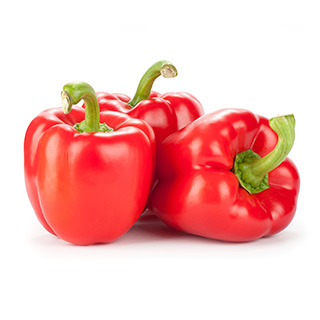 Types of Pepper High in Vitamin A (100g):
Types of Pepper High in Vitamin A (100g):
| Vitamin A in Pepper, Red Or Cayenne | |
| 100 g | 1 tbsp (5 g) |
| 2081 mcg (347% DV) |
110.3 mcg (18% DV) |
Another source of carotenoids is pepper. It contains almost the same amount of the nutrient that converts into vitamin A, as the previous fruit. It is also full of vitamins C and E and group of vitamins B. This vegetable can often be seen on our tables. However, if you want to get all the nutrients it can offer, you should definitely eat it raw. One of my favorite recipes with pepper is pasta salad. This vegetable adds so much color and crunchiness to it. You can buy red, orange and yellow peppers and any food you put them into will look appetizing.
7. Parsley
| Vitamin A in Parsley, Fresh | |
| 100 g | 1 cup chopped (60 g) |
| Vitamin A: 421 mcg (70% DV) |
Vitamin A: 252.6 mcg (42% DV) |
#7 in our list is occupied by parsley. 100 g of this herb contain 70% of your daily need in carotenoids. Additionally, it is a great source of vitamins K and C and iron. Parsley can be added almost to any dish. It can be used for marinating meat, chicken sauce and parsley pesto. It is also believed to help lose weight. For this purpose the herb is used to make tea or juice. And, of course, no vegetable salad can be served without parsley. Whole or chopped - it decorates all kinds of meals.
8. Tomatoes
| Vitamin A in Tomatoes, Red, Ripe, Average | |
| 100 g | 1 medium whole (2-3/5 inch dia) (123 g) |
| 42 mcg (7% DV) |
51.7 mcg (9% DV) |
One more yummy vegetable that can provide your body with vitamin A is tomato. The amount of carotenoids in tomato is twice lower than in parsley, but the taste is twice better. Obviously, it is easier to eat five tomatoes, than the same quantity of parsley. Plus this product can suit to any meal. My personal favorite is Italian caprese. It is quick and easy to do, and delicious tastes of basilica, mozzarella and tomato make a perfect harmony together.
9. Mango
| Vitamin A in Mangos | |
| 100 g | 1 fruit without refuse (336 g) |
| Vitamin A: 54 mcg (9% DV) |
Vitamin A: 181.4 mcg (30% DV) |
Mango is another valuable source of vitamin A. In order to get your daily level of Carotenoids you need to eat 900 g of this sweet fruit, but it is not difficult at all (it is so tasty). Mango also contains vitamin C and vitamin E, which help to strengthen your immune system. This fruit is also known as “the king of fruits.” It is traditionally used for desserts like pies, ice creams and sorbets, but can also be cooked in a form of soup, sauce or added to salad. I especially love it in smoothie. You can add some banana, or kiwi, or yogurt.
Now let us go to the animal foods that contain vitamin A.
10. Cod Liver Oil
| Vitamin A in Fish Oil,Cod Liver | |
| 100 g | 1 tbsp (14 g) |
| 30000 mcg (5000% DV) |
4080 mcg (680% DV) |
Number one source of retinoids is cod liver oil. Although it is not a very tasty product, it is definitely a nutritious one. Beside vitamin A, it contains vitamin D and omega-3 fats, which are basic for shiny skin and hair. In order to get all these valuable nutrients you need to take one table spoon of this oil every day.
11. Tuna Fish
| Vitamin A in Tuna, Fresh, Bluefin | |
| 100 g | 3 oz (85 g) |
| 655 mcg (109% DV) |
556.8 mcg (93% DV) |
Tuna fish is also full of retinoids. As any sea food, it contains lots of proteins and vitamins B3, B6, and B12, which help the body to renew blood. It is a well-known diet product. The most common meal with tuna fish is tuna sandwich. It is also often used for salads. This fish goes well with eggs, onion, celery and some lemon juice, but the best way to cook it is on a grill.
12. Shrimps
| Vitamin A in Crustaceans, Shrimp, Mixed Species | |
| 100 g | 1 medium (6 g) |
| 54 mcg (9% DV) |
3.2 mcg (1% DV) |
Shrimps have various nutrients like vitamins B12, B6, B3 and E, protein and omega-3 fats. They also contain one of the highest amounts of retinoids among all other kinds of animal food. Thanks to protein, shrimps are very low in calories and perfect for people who are careful with fats. Fried or grilled, in soups or salads - they are tasty in any form, but if you don’t know how to cook them, you can always order shrimps sushi.
13. Eggs
.jpg) Types of Eggs High in Vitamin A (100g):
Types of Eggs High in Vitamin A (100g):
| Egg, Whole, Fresh Vitamin A | |
| 100 g | 1 medium (44 g) |
| 160 mcg (27% DV) |
70.4 mcg (12% DV) |
The next animal food that contains a lot of retinoids is eggs. They are also full of protein and vitamins B2 and B12. However, the amount of vitamin A is rather low. If you want to get your daily need of vitamin A only from eggs, you will need to eat at least 10 of them.
Even though this product is not very rich in retinoids, it is still very nutritious. Eggs are famous for the variety of ways they can be cooked: medium or hard boiled, breaded egg, scrambled eggs and many-many other recipes. They are often eaten at breakfast time, but if you want to include eggs to your lunch or dinner you can simply make some salad or even pizza.
14. Cheese
| Cheese, Gjetost Vitamin A | |
| 100 g | 1 oz (28 g) |
| 334 mcg (56% DV) |
94.7 mcg (16% DV) |
Cheese has the same amount of retinoids as eggs, yet it has another element very important for human body. It is calcium, which helps our bones to be strong, our teeth to be white and our nails to be long. There are many types of cheese. Some contain more of the vitamin A, and some - a little bit less. Logically, it is impossible to fulfill our daily need of retinoids only by eating this product. Cheese mostly consists of fats; that is why you should reasonably limit your daily consumption of this product.
